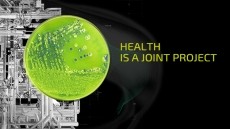BioVigilant files rapid detection tech DMFs with FDA
The IMD-A technology is mainly used by pharmaceutical firms to monitor air quality in manufacturing environments, specifically because it enables the rapid detection of potentially dangerous contaminating organisms.
BioVigilant’s drug master files (DMF) include the information that the US Food and Drug Administration (FDA) requires to assess novel bacterial detection techniques.
The Arizona-headquartered company hopes that because the DMF data can be referenced directly as part of FDA submissions it will allow drugmakers to expedite the review process for new drugs, thereby enabling an earlier market launch.
Deward Manzer, BioVigilant’s CEO explained that the firm had worked with a group of 12 pharmaceutical companies to first specify and then assess the system.
He went on to say that analyses submitted as part of the DMF had required “highly specialized aerosol science expertise not readily available outside government test labs”.
“We believe this testing, in conjunction with our customers’ validation testing, will offer a comprehensive view of the IMD-A technology and will accelerate [its] adoption across the pharmaceutical industry,” added Manzer.
Novel detection method
As the FDA’s director of new drug microbiology, David Hussong, commented improvement in both the speed and sensitivity of industrial-scale microbial detection is long overdue.
He explained that: “Today’s microbial culture methods are based on technology largely unchanged since Fanny Hesse introduced the use of agar for bacteriological medium in 1881.”
Dr Hussong added that “[the] FDA actively encourages use of new technologies, including rapid microbiology methods.”
Traditional industrial methods for the detection of bacteria rely upon the collection of environmental samples followed by growth on culture media, a process that can take upwards of a week to complete.
Such delays can be extremely costly, particularly in the current economic climate where even the largest drugmakers in the world are focused on improving efficiency and reducing manufacturing expenditure.
In contrast, IMD-A uses naturally occurring bacterial fluorescence in combination with a visual analytical technique called mie scattering, which measures the scattering of electromagnetic radiation by spherical particles on a single particle basis.
As a result, the approach produces immediate results and is capable of detecting extremely low levels of bacteria. In addition because IMD-A is a media-free system it does not require expensive growth reagents and media validation steps critical to older techniques, thereby further reducing manufacturing costs.









